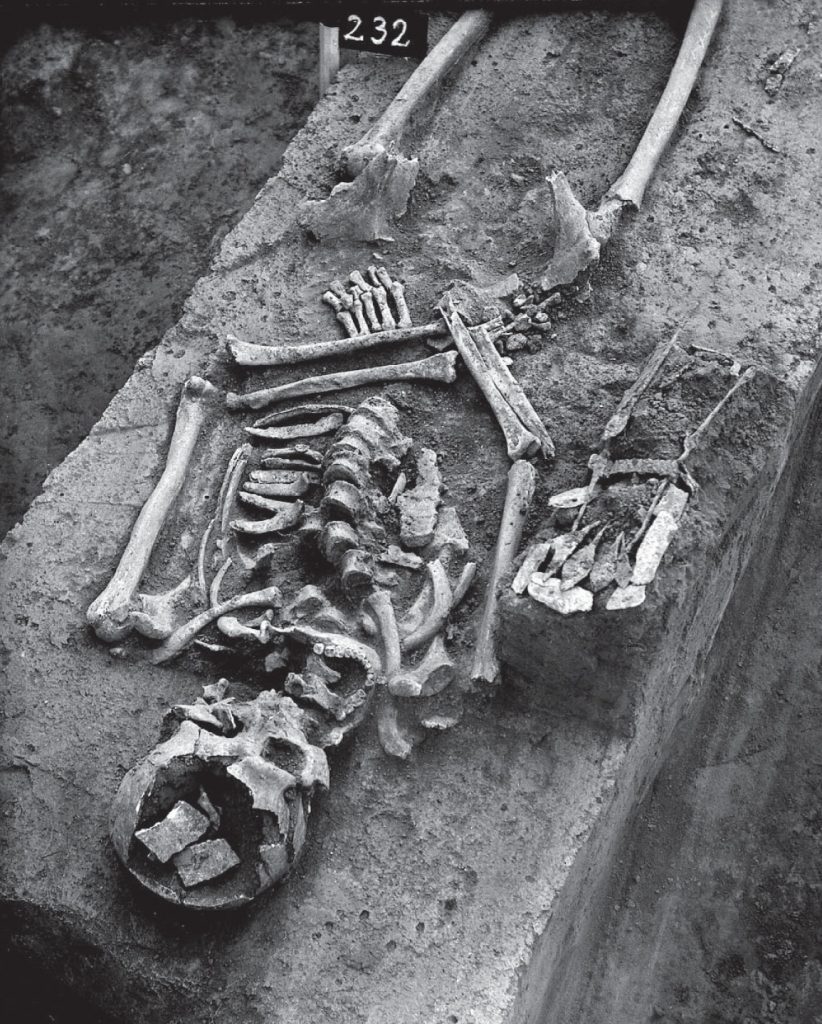THE RIDER’S GARMENT AND THE LEATHER ARMOR
THE WARRIORS’ EQUIPMENT DIDN’T ONLY CONSIST OF THE OFFENSIVE WEAPONS LISTED ABOVE. THEY STROVE TO PROTECT THEMSELVES FROM ENEMY BLOWS AND STABS AS WELL. A SPECIALLY FORMED PROTECTIVE GARMENT AND A SHIELD PLAYED THE MOST SIGNIFICANT ROLES IN THEIR PROTECTION.
 First, let’s take a look at the garment. As we can see in many contemporary images, the Scythians of Pontus, that is the inhabitants of the western, Inner-Asian steppes, as well as the Medes, wore baggy trousers that could be gathered up into pleats. Their body was covered by a long-sleeved jacket, which was open in the front and tied around the waistline by a belt. These trousers were the most significant innovation of the Scythian era that, – in contrast to the earlier long, loose and open “suits” of earlier times – were adapted perfectly to the requirements of the climate and the rider’s lifestyle. The cut of the trousers was fairly simple and it remained so for centuries to come. A square shaped piece of material, which was twice as long as the rider’s legs, was folded in half, and it was sewn together along the sides until only a hole for the waist remained open. After this, they put a hem on it and the trousers were complete.
First, let’s take a look at the garment. As we can see in many contemporary images, the Scythians of Pontus, that is the inhabitants of the western, Inner-Asian steppes, as well as the Medes, wore baggy trousers that could be gathered up into pleats. Their body was covered by a long-sleeved jacket, which was open in the front and tied around the waistline by a belt. These trousers were the most significant innovation of the Scythian era that, – in contrast to the earlier long, loose and open “suits” of earlier times – were adapted perfectly to the requirements of the climate and the rider’s lifestyle. The cut of the trousers was fairly simple and it remained so for centuries to come. A square shaped piece of material, which was twice as long as the rider’s legs, was folded in half, and it was sewn together along the sides until only a hole for the waist remained open. After this, they put a hem on it and the trousers were complete.

With regard to the garment, the wide leather-belt served as a primary means of protection. The wealthier could afford an iron mounting on it, while the simple warrior covered his belt with bone-scales. Both provided additional protection. The belt was highly significant as most of the warrior’s weapons and equipment were fixed to it. These items included the „goruthos” containing a bow and arrows, the “akhinakes” (cut and thrust sword), a dagger, a tinder-box and a drinking vessel.
The wide embroidery and overlay running along the closing edge of the jacket gave some kind of protection as well. The wealthier warriors wore a body-armour made of bone or iron-scales over the jacket, or a sort of thick leather-vest, which was ornamented on the chest and the two shoulders by iron-mountings.
On their heads, they wore a pointed cap made of felt or leather, which became well-known as the Phrygian style cap. Among the inhabitants of colder regions—the dwellers of the Asian steppes for instance—a hat covering the nape of the neck and the ears was in wide-spread use. Iron helmets only turned up in the graves of the aristocracy. On their decoration, we can observe the clear influence of Greek decoration. Greek influence is evident in the shin-guards as well. The shins and feet of the Scythian warriors were covered by a pair of felt or leather boots. It is worthwhile mentioning that their garments, in general, were richly coloured and decorated: they preferred felt and leather applique as well as colourful embroidery on their clothing, which was rich in the symbolism of their world.




